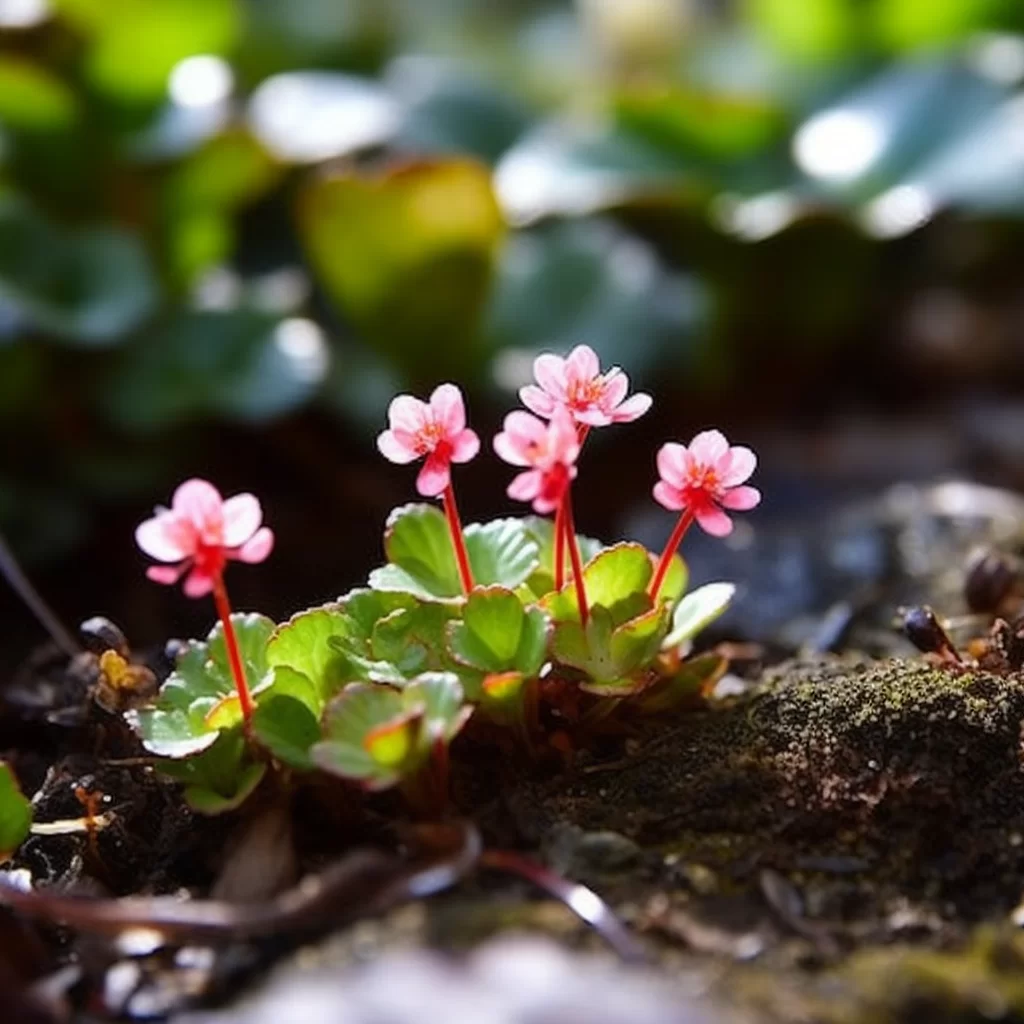Story of Day :
Contents
The Saxifrage Plant: A Complete Guide and Care Tips
Gardening enthusiasts are always on the lookout for beautiful and unique plants to add to their collection.
One such plant that deserves a spot in every garden is the saxifrage plant.
This low-growing perennial is known for its delicate flowers, which bloom in a range of colors, including pink, red, purple, and white.
What is Saxifrage?
Saxifraga is a genus of around 440 species of flowering plants that belong to the family Saxifragaceae.
These plants are native to high-altitude regions such as alpine meadows and rocky cliffsides in Europe, Asia, North America.
Care Requirements for Saxifrage Plant

If you’re considering adding saxifrages to your garden or indoor space – here are some essential tips that will help ensure they thrive:
Light Requirements
- Saxifrages prefer partial shade or filtered light during hot summer months but can tolerate full sun if provided with adequate water.
- Indoor saxifrages require bright light near east-facing windowsills or under artificial lights like LEDs or fluorescent tubes.
Soil Requirements
- The ideal soil mix for saxifrages should be well-draining soil with composted organic matter mixed into it.
- The pH level should be slightly acidic between 5-7 pH levels; however most varieties can grow at neutral pH too.
- Avoid planting them in dense clay soils which retain moisture as this could lead root rot disease development over time.
Irrigation Needs
- Saxifrages require regular watering to keep their soil consistently moist but not waterlogged.
- During the growing season, water saxifrages at least twice a week.
- In winter, reduce watering frequency, especially for indoor saxifrages.

Fertilizer Requirements
- Saxifrages do not require much fertilizer as they are low feeders.
- Apply a balanced slow-release organic granular fertilizer in early spring or use a liquid fish emulsion every few months during the active growing season.
Propagation of Saxifrage Plants
The best way to propagate saxifrage plants is through division or stem cuttings from established plants:

Division:
- Lift clumps carefully from soil and gently separate mature rosettes with roots attached.
- Pot individual clumps in well-draining soil mixtures and allow them to root before planting outdoors or transplanting into large containers.
Cuttings:
Select healthy stems without flowers and cut them off; remove lower leaves from cuttings to leave only the topmost two leaves intact.
Dip the end of each cutting into rooting hormone powder.
.
Diseases and Pests Affecting Saxifrage Plants

Saxifrages are generally robust plants that can withstand most pests and diseases when provided optimal care.
However, they may face some common issues such as:
Powdery Mildew :
This fungal disease often affects saxifrage plants when humidity levels are high, and airflow is low.
- Control powdery mildew by watering in the morning to allow leaves to dry out during the day, adjust watering frequency so that soil is not too wet or too dry between watering cycles.
Slugs and Snails :
These pests love feeding on young leaves and flowers of saxifrages especially at night time.
They can damage plants irreparably if left uncontrolled.
- To control slugs and snails, use beer traps, copper tape barriers or handpicking them off your plant as a manual method.
Use organic slug baits when necessary
In Conclusion
Saxifrages are beautiful perennial plants that add color and visual interest to any garden or indoor space.
By following the care tips outlined above- light requirements, soil needs,, irrigation needs,, fertilization requirements -, you’ll be well-equipped to keep your saxifrages healthy all year round.
Propagation through division or stem cuttings is also possible with optimal results if done correctly.
If you encounter any issues with pests or diseases affecting your saxifrage plant – early intervention using organic remedies such as insecticidal soap spray may be sufficient for control before they worsen into bigger problems; take action immediately for best outcomes.
Better yet – why not share this guide with other gardening enthusiasts so we can all enjoy these delightful little plants together!
This fungal disease often affects saxifrage plants when humidity levels are high, and airflow is low.
These pests love feeding on young leaves and flowers of saxifrages especially at night time.
They can damage plants irreparably if left uncontrolled.
Use organic slug baits when necessary